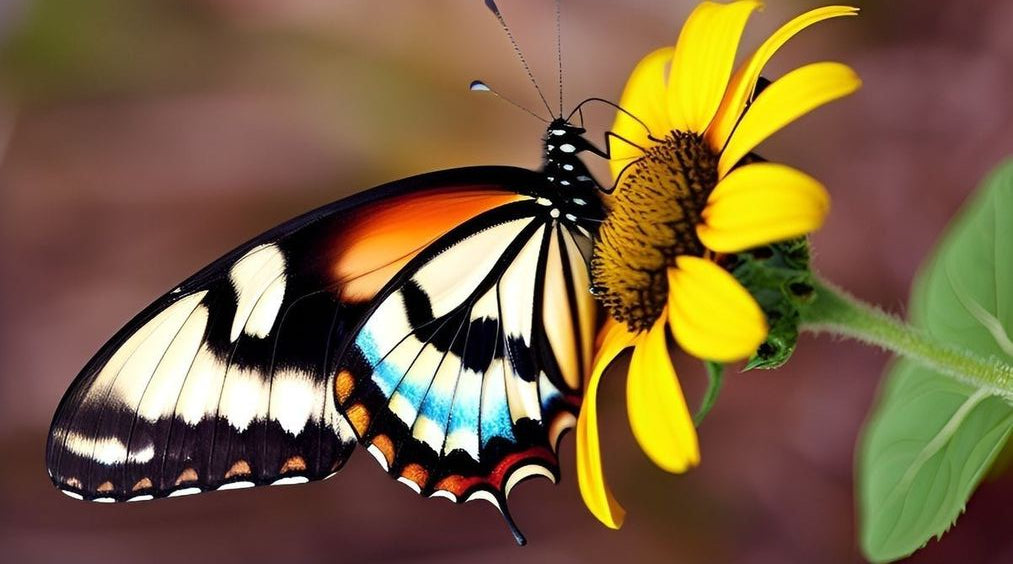Beneficial Insects: Nature’s Control of Pests

When gardeners think of insects in their garden, it is usually pests that damage ornamental and edible plants.
In reality, most insects are not harmful and some are even beneficial, supporting plant health through pollination and pest control.
TYPES OF BENEFICIAL INSECTS
There are three main types of beneficial insects:
- Pollinating insects move from plant to plant, transmitting pollen from flowers to carry out the essential function of fertilization. Without these insects, plant diversity and crop yields would be negatively affected. Pollinators include butterflies, bees, wasps, flies, ants and beetles.
- Predatory insects feed on other insects, either as adults or in the larval stage. They are useful for controlling a wide range of pests. Predators include ladybugs, lacewings, ground beetles, spiders, some flies and praying mantises.
- Parasinoid insects lay their eggs on or inside an insect host, where the hatched larvae feed on the host, killing it in the process. Most parasitoids are tiny stingless wasps or flies.
Many predators and parasites are also pollinators, mainly in the adult stage.
Having a diverse insect population in your garden, including these beneficial insects, is an integral part of a balanced ecosystem. Attracting beneficial insects to your garden is one of the safest and most effective methods of natural pest control.
Although insect pests are not completely eradicated, plant damage can be reduced and better managed with biological control methods.
Learn to recognize beneficial insects and how to attract and maintain them in your garden.
TYPES OF BENEFICIAL INSECTS
1- Murder Bug
Assassin bugs can grow to be 1 to 2 cm long, with elongated features. Many are black or brown, while some are brightly colored. About 200 species are native to North America. This long-lived predatory insect consumes a large number of pests during its life, feeding on various insects such as aphids, beetles, caterpillars, flies and leafhoppers, piercing its victim with its curved, dagger-like proboscis and sucking bodily fluids. Avoid touching assassin bugs, as they can inflict a painful sting.
How to attract assassin bugs: Include daisies, solidago, marigolds, Queen Anne's lace and herbs such as dill and fennel in your garden.
How to keep assassin bugs in your garden: Provide hiding places such as wood piles, mulch or leaf debris where they can ambush their prey.
2- Bees
Bees are among the most important pollinators. Without them, plant reproduction and agricultural yields would be significantly reduced. This broad group of beneficial insects includes honeybees, bumblebees, mason bees, and native bees.
How to attract bees: Provide a wide range of flowering plants, including native species that bees rely on as a nectar food source. Some of the best plants for bees include asters, chives, coneflowers and sunflowers.
How to keep bees in your garden: Provide bee houses for species like mason bees and other hole-nesting bees to find shelter and nesting places. Leave areas of bare ground for bumblebees, which nest in underground tunnels beneath the ground. Place shallow water dishes around the garden with small rocks or pebbles for the bees to perch on while they drink.
3- Nabides
Damsel bugs, native to North America, reach up to 1.25 cm long and are distinguished by their slender shapes and brown, black or beige coloring. This beneficial predator is most active during the summer months. Adults and larvae consume a wide variety of soft-shelled insects, including aphids, cabbage worms, small caterpillars, mites and thrips.
How to attract damsel bugs: To encourage damsel bugs to come to your garden, plant caraway, fennel and spearmint. They are also attracted to crops such as alfalfa, clover and soybeans.
How to keep damsel bugs in your garden: Adult damsel bugs overwinter in protected sites with cover crops or leaf debris. Leave garden beds untouched until spring.
4- Garden Spider
These eight-legged predators, considered arachnids rather than insects, build webs to trap pests such as aphids, beetles, caterpillars, fruit flies and grasshoppers. After weaving its web, a garden spider lies in ambush, waiting for its prey to become entangled in the web, then it injects venom to immobilize it. The prey can be eaten immediately or saved for a future meal.
How to attract spiders: Provide places in your garden where spiders have enough space to spin their webs.
How to keep spiders out of your yard: Provide protection from the elements in the form of mulch, grass clippings or fallen leaves. Empty flower pots tilted on their side or protected areas around the exterior of your home are also places where spiders can find shelter.
5- Chrysope Verte
One of the most valuable insects for the garden, green lacewings provide benefits for both pollination and predation. Adults reach a length of 1.2 to 1.9 cm and are recognizable by their green or yellow-green coloring as well as their transparent and serrated wings.
Adults are pollinators that feed on nectar, pollen and honeydew secretions, and can occasionally be predatory. Lacewing larvae feed on soft-bodied pests, including aphids, caterpillars, leafhoppers, mealybugs, mites, thrips and whiteflies, consuming up to 200 pests in a week. Lacewings are often used for pest control in greenhouse environments.
How to Attract Green Lacewings: Plant angelica, caraway, cosmos, dill and yarrow to attract lacewings.
How to keep green lacewings in your garden: Tolerate a certain amount of aphids and other pests in your garden so that the lacewings have a constant food source. Adults and nymphs spend the winter in piles of debris and fallen leaves. Leave garden cleanup until spring to avoid disturbing hibernating insects.
6- Carabe
Ground beetles, which include 2,500 different species, are recognizable by their shiny black or brown wing covers and long legs. Beneficial in both the larval and adult stages, ground beetles feed on a wide range of garden pests such as cabbage maggots, caterpillars, ground moths, silverfish, slugs, snails and thrips.
These nocturnal predatory insects begin their life cycle by laying eggs around the base of perennial plants in late summer, where the eggs will overwinter until spring. Ground beetles also eat plant matter found in compost piles, helping with the decomposition process.
How to attract ground beetles: To encourage ground beetles to come into your garden, plant a border of perennial plants and maintain an active compost pile.
How to keep ground beetles in your garden: Delay cleaning your garden until spring so as not to disturb overwintering ground beetles.
7-Syrphe
Also known as the hoverfly, this beneficial insect is renowned for its ability to remain suspended in the air and fly backwards, an unusual trait for insects. These pollinating and predatory insects reach a length of 1.2 cm when mature, and resemble bees or wasps with black, yellow or white bands.
The adults feed on pollen and nectar, while the larvae feed on pests such as aphids, beetles, caterpillars, scales and thrips. A single larva can consume up to 400 aphids in its lifetime.
How to attract hoverflies: Grow alyssum, chives, cosmos, dill, zinnias and other flat-shaped flowers that provide easily accessible nectar for hoverfly adults.
How to keep hoverflies in your garden: Provide early-flowering plants in spring so emerging insects can feed, and delay garden cleanup until spring to avoid disturbing overwintering adults and larvae.
HOW TO SUPPORT BENEFICIAL INSECTS
Beneficial insects, like all living animals, need food, water and shelter to survive.
Make your garden more inviting by providing these basic needs.
1- Grow a diversity of plants:
Plant a mix of trees, shrubs, perennials and annuals in your garden as a layered tapestry to provide food, shelter and places for insects to lay their eggs and overwinter.
Include plant varieties native to your area.
Early bloomers like alyssum and crocus and late bloomers like asters and solidagos provide a consistent food source throughout the growing season.
2-Keep plants healthy:
Provide the right growing conditions, water, light and fertilizer to keep plants in their best condition, which will make them more resistant to pest outbreaks.
3- Include water sources:
Place shallow saucers around the garden with water and rocks to give insects a place to rest while they drink.
4- Provide protection:
Beneficial non-flying insects such as ground beetles and spiders need a place to hide from their enemies.
Include ground cover plants and coarse mulch such as bark or straw in your garden where these insects can escape.
5-Delay cleaning the garden until the fall:
Many beneficial insects, their larvae and eggs overwinter in plant stems, fallen leaf debris and garden soil.
Wait until spring to clean up your garden so as not to disturb overwintering insects.
6- Eliminate the use of chemical insecticides and pesticides:
Chemical pest controls can kill good bugs as well as pests, so they are not recommended for use in the home garden.





































